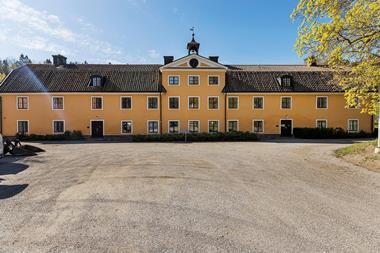The Swedish government’s special investigator Tord Gransbo has finally presented his proposals for modernising and streamlining the AP Funds, in a report which puts forward many options for reform, while coming down in favour of merging the three Stockholm-based funds into two.
Staff at the four main buffer funds backing the state pension system – AP1 to AP4 – as well as at the smaller, private equity specialist fund AP6, have been on tenterhooks for months, not knowing what their long-term organisational fate would be.
The original deadline for Gransbo’s investigation of the end of March was extended at that point until this month.
He was tasked in October 2023 mainly with probing the potential simplification and modernisation of the AP Funds’ administration; looking into how requirements for the buffer funds’ boards could specify appropriate competence as well as analysing how AP6 could be consolidated into the buffer fund system, perhaps by merging it with the other Gothenburg-based buffer fund, AP2.
The review’s scope was broadened in January to include considering consolidating the three Stockholm-based buffer funds – AP1, AP3 and AP4 – into two funds.
In yesterday’s report, he also considered the alternative of increasing the collaboration between those three funds while keeping them separate.
“Both proposals could lead to greater cost-effectiveness over time,” he said.
“However, the consolidation proposal [three funds into two] has a significantly greater potential to be able to improve conditions for an effective, rational and appropriate management of the buffer capital, and thus in the long run be able to contribute to a higher net return,” he said in the report, adding, “That proposal is preferable”.
But the report did not single out any of the three funds as a candidate to be split up. The report will now be consulted on, and the all-party Pensions Group will subsequently have the task of deciding the actual shape of any changes to the system.
The report shies away from the option of merging AP6 with AP2, but proposes an incorporation of AP6 into the buffer fund system – allowing inflows and outflows from and into the system – while making specific changes to improve its efficiency.
In addition, the Gransbo report proposes changing the structure of the AP Funds’ boards to make them more focused and efficient, cutting the number of members on the boards of all the AP funds, including AP7, as well as requiring specific skills.
At AP6, chief executive officer Katarina Staaf reacted to the report, saying: “The review points out that the expertise of AP6 should be scaled up and that AP6 should be fully integrated to the Swedish buffer system.”
She added: “One way of doing this, according to the review, is to remove today’s legal requirement of currency hedges, to allow inflows and outflows linked to the pension system and to open up for AP6 to be enabled to borrow from the Swedish National Debt Office (Riksgälden), which is the central government financial manager.”
“All are necessary changes that we welcome,” she said.
A spokeswoman for AP4, said the buffer fund would now read the proposals very carefully and analyse them, assisting in the formal consultation process.
“It is good and natural to regularly review the management of the public pension system’s buffer capital, and we welcome the fact that the Pensions Group has started to review how the pension system can be developed and strengthened – including the report ‘Review of the AP Funds’ presented yesterday,” she told IPE.
AP2, in Gothenburg, said the fund was familiarising itself with the investigation material, and awaited the consultation procedure. AP3 declined to comment, but also pointed to the upcoming consultation.
Commenting on yesterday’s presentation of the Gransbo report, Niklas Wykman, minister for financial markets, said: “Public funds must be used and managed as efficiently as possible.”
“Effective management of the buffer funds increases pensions in the long run,” he said.
Read the digital edition of IPE’s latest magazine


































No comments yet